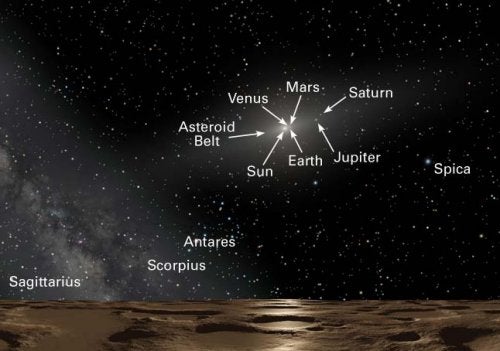The astronomers who discovered Sedna were so certain that a satellite accompanied the object that when they announced its existence, they released an artist’s rendition of the supposed moon. It appears the artist needs to touch up the creation.
According to recent observations using the Hubble Space Telescope (HST), a substantial moon may not complement Sedna after all. This leaves investigative team members scratching their heads while the object becomes more mysterious.
“This is outside the realm of expectation and makes Sedna even more interesting,” says Mike Brown, associate professor of planetary astronomy at Caltech and leader of the team that made the discovery. “But I simply don’t know what it means.”
More recently, the team captured 35 images of Sedna, officially named 2003 VB12, using the HST. These failed to show any presence of a moon. Possible explanations for the missing satellite are that the moon is too close to Sedna for HST to image it from its vantage point, it is fainter than expected, it was lost or destroyed, or Sedna’s rotation rate is wrong.
Team members feel the rotation rate most likely is accurate. This speed has been recalculated to determine if a mistake was made initially. Reanalysis convinced astronomers that the first estimate of a 40-day rotation is now somewhere between 20 and 50 days, which still would indicate the influence of an orbiting body. More observations are necessary to confirm this rate.
The HST images, however, do not close the case for the moon’s existence. Sedna is slightly smaller than what the observatory can resolve from its position. The scale and distance constraints are similar to imaging a soccer ball in Los Angeles from a vantage point in Seattle.
For now, astronomers will focus on answering the questions of Sedna’s size and revolution speed. They then face questions about the object’s origin and bizarre orbit. Regardless, the process of demystifying this strange body has only begun.










